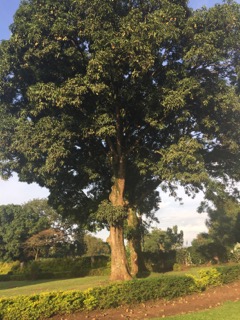Week Four - Touring Hoima
I am now in week four (how has a month already passed?!) and mentally am willing the days to slow. For those keeping track of my summer travels via this blog, I apologize for the delay with this post! My work load increased dramatically last week (a happy occurrence!) and I tried to use every spare moment to stay ahead in anticipation of an offsite training this week, causing a failure to adhere to my semi-regular posting schedule.
Last week, I remained in Kampala and only have work events to report on. Emily and I have a number of ongoing, background research projects to occupy us, in addition to our primary work with SAFE. We are currently researching trends in United States foreign assistance to Uganda as well as triggering events influencing funding decisions and the influential policymakers. We will also begin a comparative analysis of the extractives industry and associated transparency laws in relevant countries as well as an analysis of human rights practices in East Africa.
This week, Emily and I had our first introduction to the on-the-ground extractives industry in Uganda. We attended an offsite training, entitled “Conflict-Sensitive Reporting and Natural Resources in the Albertine Region of Uganda,” in Hoima, located in the Albertine Region of Uganda and home to commercially viable oil deposits. Although still in the exploration phase, certain oil companies maintain skeletal staffs in Hoima in anticipation of extraction. Uganda is currently undergoing a competitive application review process and expects to issue licenses to oil companies for extraction in January 2016. On July 1, they placed 17 companies on a “short list” and will go through another round of review to determine which companies will receive licenses for crude extraction.
Journalists from the Albertine region were invited to the training to learn how media can either inflame or mitigate potential conflicts. Representing radio, television, and print media, the journalists had varying levels of familiarity and experience writing about oil and natural resources; however, due to the speed with which the extractive industry is developing, most likely, all will become intimately familiar with oil and natural resources soon. As someone with no journalism experience, even when looking all the way back to elementary school, to have the opportunity to sit in a room full of journalists was quite incredible. There were discussions of the media’s essential role of informing the public and the ethical and moral standards that accompany such a position. It was good to be reminded of the critical role journalists and the media play in our lives; without their research and investigation, many stories would remain outside of the public’s knowledge. I am guilty of avoiding the 24-hour news cycle at home, but my time with members of the Ugandan media renewed my respect for those members of the media that uphold their duties: reporting balanced news and adhering to the highest moral and ethical standards in doing so.

While the training was incredibly informative and interesting, our time in Hoima wasn’t solely dedicated to work. The hotel we stayed in offered complimentary time in the steam bath, providing relaxation at the end of the day. I have never been to a steam bath but, in Uganda, people often go on a weekly basis, many times on Sunday evenings in anticipation of the coming week. We also toured Hoima, viewing the Bunyoro Kingdom palace and visiting the Bunyoro Cultural Lodge. While touring the Bunyoro Cultural Lodge, our “tour guide” - a participant in the training from Hoima - pointed out the many mango trees on the Kingdom’s land. I had no idea mango trees were so large. While we were admiring the tree and simultaneously trying to find freshly fallen mangoes on the ground, we saw a group of three boys attempting to climb the three. Out guide told us that the mango tree that had “the sweetest mangoes in Uganda.” One boy hoisted the second into the tree and, within seconds, he had shimmied his way into the uppermost branches. To free ripe mangoes, he walked to the edge of a branch and would lightly bounce up and down on it - a terrifying sight for someone unaccustomed to the proper method of getting fresh mangoes. Eventually a number of mangoes fell down and the boys allowed us to take a number to try ourselves.

First of all, our guide was not exaggerating when he designated the specific tree as the “tree with the sweetest mangoes in Uganda;” it tasted as if someone had covered the mango in sugar. Delicious. Second, after eating a mango almost directly off a Ugandan tree, I doubt I will ever be satisfied with mangoes when I return back to the United States. It will be difficult to compete with a freshly harvested, naturally grown mango. Although we were unable to see all of Hoima’s sites, I look forward to continuing to learn of the extractive industry in Uganda and the effect on Ugandan districts like Hoima.